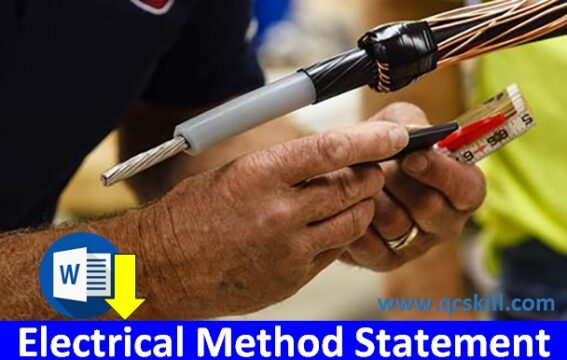
Method Statement for Electrical Cable Bus Installation (13.8kv, 4.16kv & 0.48kv) Word Format Free (DOC)
- File Name: WMS – ELECTRICAL CABLE BUS INSTALLATION
- File Type: MS Word
- File Size: 185 KB
The Ms Word provides a method statement for installing fire-rated bus duct that outlines responsibilities, safety procedures, materials, tools, and the installation methodology. It describes inspecting incoming materials, storing them properly, laying out the bus duct per approved drawings, using lifting equipment safely, and following quality control processes to ensure compliance with project specifications. The installation work will be manually performed by an electrician and helpers following the method statement, and overseen by managers for safety, quality and compliance.
This Method Statement is applicable for the installations of 13.8, 4.16 and 0.48kV Cable Bus installation activities from Transformer to Switchgear at Train Substations building, within SAUDI ARAMCO PROJECT.
The purpose of this Method Statement is to describe the sequence of operation and precautions to be observed to ensure the installation of 13.8kV, 4.16kV, & 0.48kV Cablebus is performed safely, efficiently and in accordance with Saudi Aramco Job Specifications. The Method Statement is intended to provide general application guidance and established control during preparation and installation.
FAQ:
What is an electrical cable bus?
Cable Bus is a power distribution system using multiple parallel conductors braced in a rigid enclosure. Each conductor is insulated and fully continuous from source to load. A standard range of cable bus systems are available from 600V to 218kV and up to 10,400 amps.
What is the bus cable used for?
Bus cables or industrial communication cables are used for the digital signal transmission between sensors and the corresponding display units. Due to the high transmission rate and data flow, standard data cables are not sufficient any more.
What is an electrical bus connector?
Busbar connectors are conductive devices used in electrical systems to connect multiple electrical components. Typically made of copper or aluminum, they provide a low-resistance path for electrical current between various devices, such as circuit breakers or switches.






